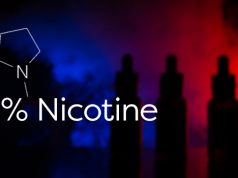Echoing these concerns, Health Canada is introducing new measures with the aim of curbing the recreational use of Nicotine Replacement Therapies (NRTs) among youth, more specifically nicotine pouches (NPs). Minister of Health Mark Holland announced a Ministerial Order aimed at reducing the appeal, access, and use of the products by people under 18, while ensuring their accessibility to adults trying to quit smoking.
Key measures include a sensible ban on youth-targeted advertising, as well as one which will divide opinions: requiring NPs to be sold only by pharmacists and kept behind the pharmacy counter. Additionally, these products will be limited to mint or menthol flavours, must carry clear nicotine addiction warnings, and indicate they are for smoking cessation. While manufacturers will need to submit label and package mock-ups for approval to prevent youth appeal.
Health Canada regulates NRTs under the Food and Drugs Act, requiring approval and health claims for legal sale measures must align with Canada’s broader public health goals. These include preventing nicotine dependency among minors while supporting adults who wish to quit smoking.
Who do the measures actually target?
Canadian tobacco harm reduction activist, Maria Papaioannoy, who for the last three years has been tirelessly striving for consumer rights via advocacy organization Rights4Vapers, clarified the situation. She told Vaping Post that while these measures are an intended calculated attack on the tobacco industry, their real victims are the smokers who need the products in order to quit smoking.
Sadly, Health Canada’s proposed measures reflect worldwide concerns about the rising popularity of NPs. In Australia, following a recent bill limiting vape sales to pharmacies, nicotine pouches are becoming increasingly popular, and while currently in a legal gray area, nicotine pouches are sold openly.
Ironically cigarettes are still legal in Australia, however, they are heavily taxed, making them the most expensive in the world. These high costs, as well as health concerns, have been pushing consumers towards alternatives, despite stringent regulations. Sadly these new consumer preferences coupled with the local harsh regulatory atmosphere have fuelled a burgeoning black market for the products. In fact Australia’s customs have seized a significant number of smuggled nicotine pouches, most of which come from China.
ln the US while teen vaping rates have recently declined in most states, officials warn that the use of nicotine pouches, such as Zyn, may be on the rise among young people. For example, in New Mexico’s Santa Fe County, 25.7% of high school students reported using e-cigarettes in 2021, but this figure has decreased to 19% statewide in 2023. And, as vaping declines, the New Mexico Department of Health is anticipating an increase in use of nicotine pouches.
Data on teen NP use is currently scarce, however, internet searches suggest a growing interest, with searches for products like Elf Bars having shifted to Zyn pouches over the past year. Officials suggest that higher prices for vaping products and targeted regulations, such as those on flavoured products, might further reduce youth vaping and subsequently increase NP use.
The arguments in favour and against
On the other hand, proponents of nicotine pouches argue that they provide a less harmful alternative to smoking, aiding in smoking cessation. Research in Harm Reduction Journal suggests that nicotine pouches offer a way to consume nicotine without the harmful chemicals associated with combustion. Advocates claim that these products could play a crucial role in reducing smoking-related illnesses and deaths. They argue that by focusing on regulating marketing and ensuring safe levels of nicotine, rather than outright bans, public health goals can be balanced with harm reduction strategies. However, as more data and studies emerge, the debate continues.








